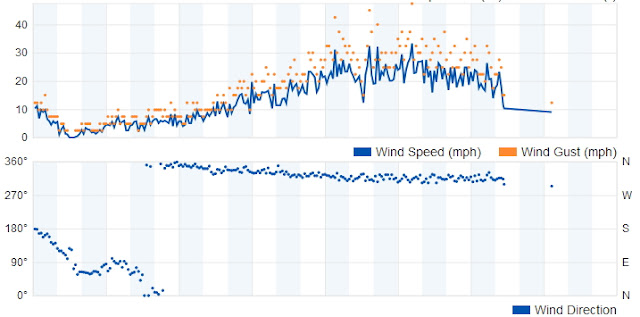In March 2021 I received a government stimulus payment of $1400 as part of the Covid-19 recovery. So I decided to do my civic duty and stimulate the economy by purchasing a DIY Mr. Cool heat pump. And of course, I am on a mission to reduce my carbon footprint. I got a very good price from Lowe's of under $1600 for this 240V unit which is rated at 23,000 BTU or 20 SEER for cooling and 25000 BTU for heating (Model: DIY-24-HP-C-230B). It is rated for 1000 ft.² so it will be sufficient to heat the ground floor of my home which is roughly 27 X 27ft. It is a split system meaning that it has a condenser outside and an air handler inside connected by wiring and plumbing and can do both air conditioning and heating. Split heat pumps are known to be very efficient - typically well over 300% efficient, meaning 1000 W of electrical energy gets you over 3000 W of heating or cooling energy. Yes I know, this sounds like magic, but it's actually just basic physics.
By purchasing the DIY installed unit I am saving over $2000 in markups and installation costs. Several years ago I got prices from a couple of different local installers that were around $4500. I did have to buy almost $200 worth of additional parts to complete the installation. This includes the outside mounting bracket, electrical wire, circuit breaker, outdoor disconnect box, outdoor conduit and a plastic line set cover. So all in, I'm spending a little over $1800. It took me many hours of research to identify and select the best prices for all of these components but it was worth it, and I am a geek so this is what I do!
I spent about seven hours doing the actual installation, and if my house had not been built in an unusual way, it would've been a lot easier and faster. I watched YouTube videos of other people doing installations and some people were able to do it in 4 hours or less.
 |
| Installing line set and mounting bracket |
The two biggest challenges were drilling a 3.5" diameter hole through the wall for the plumbing line set, and installing the mounting bracket for the condenser outside. That hole had to go through 3 2X6 studs and took over an hour to open up!
Here's what the condenser looks like mounted outside my basement door:
I made a time lapse video of the installation with subtitles explaining each step:
From studying the energy consumption, I am very disappointed to see that the standby energy use ranges from 37 to 57 Watts. According to a tech support guy, they need to leave the fan inside running at low speed to continuously sample the temperature for the thermostat. This is grossly inefficient and there seems to be no way to disable that.
Since my home, business, and vehicle are largely powered by my self installed solar array, the electricity for this heat pump will come mostly from the sun. I will keep the Rinnai propane heater in place because heat pumps lose efficiency when temperatures drop below 5°F as they do often here in Maine in winter. I also use a large wood stove in the basement whenever outside temperatures are below 20°F. By using up to a cord of locally sourced firewood, I am also reducing my energy needs with a renewable resource.
This Mr. Cool heat pump also comes with a smart phone app and can link to my Amazon echo units so that I can control it by voice by asking Alexa to change the temperature setting etc. The app lets me set up a schedule of temperatures and also review the history of usage by hours per day. It has a geo-fencing option that you can use to turn the heat down when you leave home, but since I'm around all the time, I won't be using that. It also shows a timeline of when settings were changed, all of this really appeals to the geek in me!
Update: After a few months, I learned that it is best to set a comfortable temperature and leave it there in the winter. This is more efficient because the system does not have to work hard to make up the difference when the thermostat is set higher. Although in the summer which is mild here in Maine - I just turn the unit on and off as needed for air conditioning. These units are MUCH more efficient in AC mode and can cool the room rapidly.













































